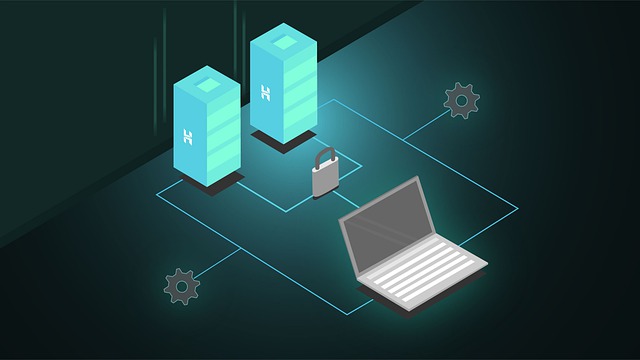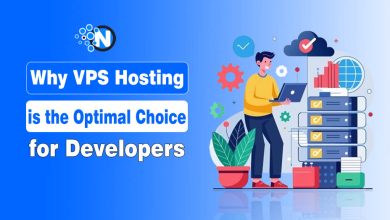7 Tips for Securing Your Windows VPS Hosting Server

As technology advances to make life easier and quicker, so must your security approaches to ensure the smooth running of all your operations. Since your business or other daily dealings rely heavily on how secure and reliable your hosting server is, this isn’t something you can compromise on.
The time we live in today brings forth some of the best and most modern technologies. Yet while these advancements aim to streamline workflows and expedite several processes simultaneously, they’re not entirely immune to external threats. This is because while technology became more complex and futuristic, so did cybercriminals and their strategies to try and overcome these updates. Some of the world’s biggest enterprises have fallen victim to hackers and their various schemes, such as phishing, malware attacks, spoofing, or DNS tunneling.
Tips for Securing Your Windows VPS Hosting Server
VPS, or a virtual private server, is a hosting platform that allows you to build an application or website without wasting resources on a physical server. And since it holds pertinent and valuable data regarding your work, keeping it secure must be a topmost priority.
However, if you don’t know how to secure your VPS server, use these seven tips below to guide you with the top strategies.
1. Consider your options and choose wisely
To provide your company with an excellent web hosting experience, choosing a VPS server that works well for you is crucial. You must consider several factors before deciding, including your budget, requirements, performance, and any additional benefits you may get.
And while many options are available, it’s wise to go for a Windows server that prioritizes a secure working environment above all else. It provides added protection for your virtual and complex database while ensuring your work performance doesn’t lag. More importantly, with several affordable pricing plans available, you can pick the most suitable one according to your budget.
2. Activate firewalls
Firewalls are software that controls the traffic in and out of a server. Since it manages what networks and users get exposed to your web page, it protects you from encountering potentially damaging systems. Activating the appropriate firewalls restricts access to only specific services of your choosing. Typically, each hosting server has multiple services running by default which you can broadly categorize as public, private, and internal. This categorization allows you to constrain contact and connections with only the services you allow.
By blocking access to most configurations, the software reduces the risk of cyberattacks and prevents data exploitation of your company. Even with a secure hosting server, firewall services can offer an additional layer of protection.
3. Install antivirus
Hundreds of thousands of new pieces of malware get created daily. Their constant bombardment makes web pages and hosting servers vulnerable to attacks and virus infection. The problems it causes can range from preventing you from accessing data and taking control of the web page to damage your hardware. Antivirus software can prevent or at least significantly reduce the frequency and severity of these attacks in several ways. Installing this program usually handles and eliminates malicious servers without you ever finding out about them. Since it constantly runs in the background, it schedules regular scans and keeps you from worrying about potential malware. Although the benefits of antivirus software are diverse, they typically detect and remove viruses, prevent phishing or identity theft, and offer secure password encryption.

4. Disable default accounts
When you install an operating system on your computer, the hosting server automatically creates a default administrator account. This practice is usual and therefore expected by cybercriminals looking to pounce at the first chance they get. Often these get initiated by robots or other malware servers who try to use brute force to invade your account. Their attacks can come from anywhere and could either be targeted or generalized.
Once they access your administrator account, you quickly start losing control of the entire hosting server. And so, to keep this from happening, you must immediately disable the default account when it gets built. Instead, create a new user and give that account the rights of an administrator. You must also be careful not to keep a generic username such as “admin” or “administrator” but use other letters or numbers to generate one.
Some examples include:
- Admin-CompanyName
- User-Admin-CompanyName
- Administrator-User-EmployeeID
5. Strengthen your passwords
Besides your administrator’s name, you must also set a secure password. You must be careful not to share this password with anyone, let alone write it anywhere to store it. Unfortunately, many users overlook this need and rely entirely on external software for protection. But while firewalls, antivirus, and a secure hosting server can prevent malicious attacks, there’s not much they can do if someone logs in as an administrator.
A password should be at least 10-15 characters long, have a combination of letters and numbers, and must have a symbol also. Avoid keeping nicknames or other personal details that hackers may easily guess. Remember to change your password regularly and avoid repeating one you’ve already set.
6. Set careful user account policies
As an administrator or owner of your website, you have the right to provide as much or as little access to other team members. Make sure every user has a separate account so you can keep track of who does what. Update their account policies and add stipulations for a minimum password length and complexity. In case of inactivity, enable session timeout and other lockout policies. Additionally, you could also add two-factor authentication to prevent outsiders from trying to enter your system.
Managing controls and setting up user account policies for all who can access your website is one of the most effective ways to prevent cyberattacks. This practice ensures that your server doesn’t fall into the wrong hands, even unconsciously.
7. Keep your operating system updated
Your Windows updates are there for a reason. Many users habitually put off these updates, ignore them, and overlook their importance. However, your operating system needs to get updated to the relevant version regularly to keep up with attackers that may seek to harm it. Many Windows VPS come with a feature for automatic updating. Enable this option to mitigate the risk of delaying an update and falling prey to potential targets.
Conclusion
Securing your VPS hosting server isn’t just beneficial for you but is, in fact, vital to keep your website live on the public network. More importantly, even if the server can’t eliminate a threat, a secure environment will inform you of its malicious intent in plenty of time. And while keeping any online platform 100 percent safe is practically impossible, you can significantly minimize potential risks with these tips above.




